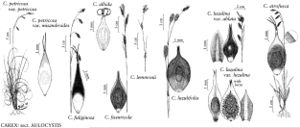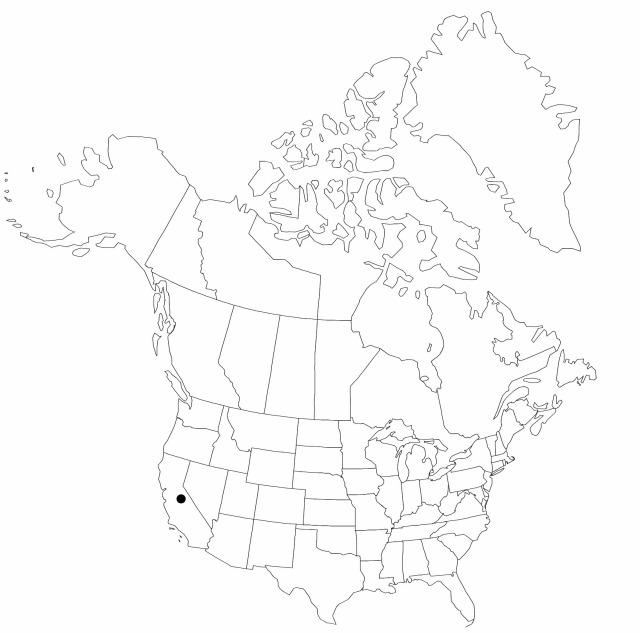Carex lemmonii
Bot. Gaz. 9: 93. 1884.
Plants densely or loosely cespitose; rhizomes slender, short. Culms to 80 cm. Leaves: blades 1.5–3(–4) mm wide. Inflorescences usually less than 15 cm, proximal internodes usually less than 100 mm; peduncles of lateral spikes usually included or exserted less than 1 cm; proximal bracts with blade 8–75 mm, sheath cylindric, 6–25 mm, mouth not purple-banded, U-shaped, 0.7–1.3(–1.5) mm wide. Spikes 4–6; lateral spikes pistillate androgynous, erect or, sometimes, proximal spikes pendent on long-exserted peduncles, 10–15(–20) × (3–)4.5–7(–8) mm; terminal spike usually staminate, ± erect, 10–16 × (2.5–)3–5 mm. Pistillate scales usually at least partly gold or red-brown with broad scarious margins and tip, sometimes all white, obovate to ovate, 1.8–3 × 1.1–1.8 mm, apex usually obtuse, sometimes short-awned. Staminate scales gold or reddish brown with pale midvein and scarious margins, sometimes all white, obovate to elliptic, rarely ovate, (2.6–)3–3.7(–4.0) × 0.9–2 mm, apex obtuse. Anthers 1.4–2.5(–2.7) mm. Perigynia spreading, usually green or with a few purple blotches, occasionally all purple, 10–16-veined, obovate to ovate, 2.7–3.5(–4) × 1–1.7 mm, margins usually ciliate distally, glabrous; beak distinct, 0.7–1.2 mm, tip usually brown or purple, usually ciliate, distance from beak tip to achene apex less than 1.4 mm.
Phenology: Fruiting summer.
Habitat: Marshes, bogs
Elevation: 700–3000 m
Discussion
A variant of Carex lemmonii in the San Bernardino Mountains (occurring in the same general area as typical plants) approaches C. albida in leaf width and spike size and has mature perigynia 3.8–4.6 × 1–1.5 mm and mature achenes 1.7–1.9 × 0.8–1.2 mm. In Lassen, Plumas, and Butte counties, C. lemmonii has the white pistillate scales and perigynium beak characteristic of C. albida. A Sierran variant has few, appressed-ascending perigynia and may be distinct.
Selected References
None.

